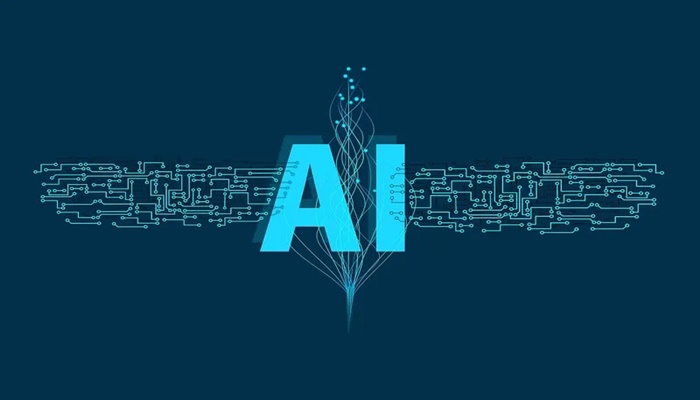Everyone talks about how AI is going to take jobs, and that’s somewhat true. We’re worried about AI job takeover – yet we don’t fully understand how it’s going to happen, when it’s going to occur or how much time we have to prepare.
Most people believe that task complexity determines whether AI adoption will be fast or slow. This assumption is completely wrong. As the Sun Tzu saying goes: “Know yourself and your enemies and you would be ever victorious.” So you need to understand the following dynamics.
How AI works
The mechanics of AI are still somewhat unclear, even to experts. However, we do know one important thing: it learns.
Have you ever gotten shocked while fiddling with electronics? I have, and that experience taught me never to do it again. We humans learn from experience.
AI models learn from data. An AI model with limited data is like a toddler. In contrast, one with extensive data is like an experienced grandfather.
The data paradox
Which is harder: driving a car or writing code?Most would say coding. Yet in AI development, the opposite seems true.
Large Language Models (LLMs) are relatively new. Before ChatGPT, few associated AI with chatbots – more likely the Terminator. The LLM era began around 2013-2014 with neural networks like word2vec. Autonomous driving, on the other hand, began in the 1980s. In 1987, Ernst Dickmanns’ team had a Mercedes-Benz van drive itself at 96 km/h on a German highway using computer vision.
Despite this massive head start, autonomous vehicles still lag behind LLMs. While ChatGPT performs reliably across countless scenarios, AI drivers remain inconsistent.
But why? Companies like Tesla and Waymo have invested billions. Yet if a new company wanted to enter the space – even with brilliant engineers and unlimited funding – they’d still need thousands of hours of diverse driving data. Some accident types are so rare they’re nearly impossible to train for.
Meanwhile, LLMs train on the entire internet – a data-rich playground.Hence, AI is more likely to replace coders than drivers not because coding is easier, but because the data is easier to come by.
AI is basically like that kid in college who had access to all the old exams and study guides. Of course they’re going to crush the test compared to someone scrambling with incomplete notes from a few lectures.
That’s exactly what’s happening in the job market. Some industries are drowning in useful data that AI can learn from. Others? They’re working with scraps. The numbers are pretty stark. Industries with tons of good data could have AI adoption rates around 60-70%. Meanwhile, sectors without much data might struggle with less than 25%.
The jobs getting hit hard
- Software development is getting hammered. GitHub hosts over 420 million repositories, including at least 28 million public ones – millions of examples of how to solve programming problems. Tools like GitHub Copilot study all that code and learn to write programmes independently. Three-quarters of developers now use AI assistants.
- Customer support is another sitting duck. It is ripe for AI automation due to abundant data. IBM notes AI uses call, email and ticket data to enhance responses and cut costs by 23.5%.
- Finance alsoheavily employs machine learning in algorithmic trading, with high-frequency trading accounting for around 70% of US equity market volume, leveraging vast market and transaction data for predictions.
Sectors with lack of data
- Healthcare’sAI adoption lags due to scarce public data. Less than 10% of surgical datasets are publicly accessible, limited by HIPAA and fragmented sources. Patient data is scattered across different hospitals, insurance companies and clinics. AI can’t learn effectively when the information is locked away in a thousand different places.
- Construction might be the most AI-proof industry out there. Not because building houses is rocket science, but because the industry barely keeps digital records. Every project is different, documentation is terrible, and there’s no standard way to track what works and what doesn’t.
- Education’sAI potential is curbed by student privacy laws. The US Department of Education notes that FERPA restricts data collection and sharing, limiting AI’s use of student data.
In response to these data shortages, some industries are resorting to invasive measures. Hospitals are installing comprehensive video monitoring in operating rooms, ostensibly to train surgical AI, but this creates unprecedented surveillance of medical professionals. AI-powered proctoring systems that track students’ eye movements, facial expressions and typing patterns during exams are under development, raising concerns about surveillance systems that may far exceed their original purpose.
The economic reality
The AI transformation isn’t hitting every part of the economy the same way. In data-rich sectors, we’re witnessing what economists call “creative destruction” at breakneck speed. Old jobs vanish almost overnight while new ones emerge, but these new positions often require completely different skills and tend to cluster in tech hubs. A customer service centre that once employed 500 people might transform into 50 AI oversight specialists working from a single location.
Data-poor industries face an entirely different challenge. They must digitize to stay competitive, but this creates daily friction between cutting-edge technology and established practices. The transformation happens more slowly but cuts deeper, restructuring entire departments rather than simply replacing individual roles.
Sure, new jobs appear, but they are not one-to-one swaps. Ninety-two million jobs are projected to be displaced by 2030, with 170 million new ones emerging. But these aren’t direct exchanges happening in the same locations with the same individuals. The real challenge isn’t only about job numbers; it’s about the gap between where jobs vanish and where they come back, between the skills workers possess and the skills that new roles require.
How to adapt
For job-seekers, the key insight is that industry boundaries are blurring faster than job categories are crystallizing. Rather than focusing solely on traditional career paths, look for roles that bridge domains – positions that combine human judgement with AI capabilities, or that translate between technical systems and business needs.
Reframe your skills inventory around adaptability, not just expertise. Instead of listing what you’ve done, identify how you learn, solve problems and work with new systems. Employers increasingly value people who can navigate uncertainty and integrate new tools into existing workflows. Your ability to successfully adopt the last major change at your workplace may matter more than your proficiency with any specific software.
Target the friction points. Every organization implementing AI faces the same challenge: how to make sophisticated technology work within messy human systems. Look for roles in charge of management, training or process optimization within AI-adopting companies. These positions often don’t require deep technical knowledge, but do need people who understand how organizations actually function when theory meets practice.
Consider the “last mile” opportunities in your current industry. While tech hubs generate headlines, every sector needs people who can bridge the gap between AI capabilities and local implementation. Healthcare systems need someone who understands both patient care and data analytics. Manufacturing plants need operators who can work alongside automated systems. Often, your existing industry knowledge combined with basic AI literacy creates more opportunities than starting from scratch in a completely new field.
Source – https://www.weforum.org/stories/2025/08/ai-jobs-replacement-data-careers/




















